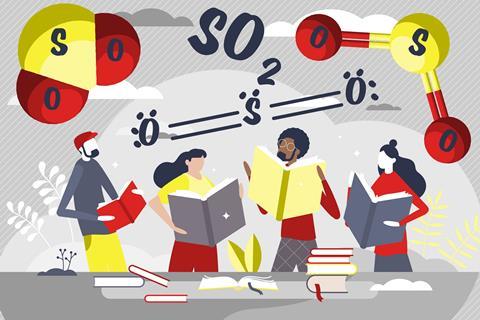How a molecule is represented affects the predictions students make about chemical properties
Researchers recently investigated how representations of a molecule affect students’ ability to explain chemical bonding. They found that students make different interpretations and predictions from different representations of the same chemical entity.

Representation fluency
Students need to be fluent with varied representations if they are to understand fundamental concepts. Chemistry is full of representations: symbols, formulas, two-dimensional and three-dimensional structures, equations and graphs. Importantly, students need to be able to identify the information encoded within these representations. Information can be encoded explicitly, such as the shape of a molecule in a ball and stick representation, or implicitly, such as polarity in a ball and stick representation.
Over 1000 general chemistry university students took part in the study. They completed a short test, which asked them to predict the chemical properties of sulfur dioxide: relative bond length, molecular polarity and the strongest intermolecular force with a water molecule.
The researchers, Ayesha Farheen and Scott Lewis, randomly split students into four groups. They gave each group a different representation of the bonding of sulfur dioxide: (1) a chemical formula, which contains the symbols of elements and number of each atom in a molecule; (2) a Lewis dot structure, which shows the connectivity between atoms, valence electrons and lone pairs; (3) an image of a ball and stick model, which shows the connectivity as well as the shape of the molecule; and (4) an image of a space filling model, which shows the connectivity, shape of the molecule and the relative atomic cloud sizes.
The study compared students’ responses between the four groups. The research duo found that the different representations led to variations in students’ ability to correctly predict relative bond length and molecular polarity. The Lewis dot structure representation hindered some students’ predictions of polarity if the shape of the molecule was inaccurate (which is common for Lewis structures). The ball and stick representation cued students to rely on visual estimations of bond length, for example. Finally, the least informative representation – the chemical formula – led students to use chemical conventions to work out their answers.
Teaching tips
- Use the test from this study to start a discussion around representations with your classes.
- Use the findings around Lewis dot structures, ball and stick representations and chemical formula to inform your decisions about which representations to use when discussing specific chemical properties.
- We should not assume that using multiple representations when describing chemical concepts will lead to more effective learning. A more nuanced approach may be necessary to ensure representational competency.
- Different representations elicit different thought processes in students. Consider this when using each representation separately and in combination.
- The ability to focus on features of a representation and extract information from it is known as representational competency. Students may need help to differentiate between the implicit and explicit information encoded in different representations, and to make connections between different representations.
Fraser Scott
Reference
A Farheen and S E Lewis, Chem. Educ. Res. Pract., 2021, 22, 1035–1053 (DOI: 10.1039/D1RP00070E)
References
A Farheen and S E Lewis, Chem. Educ. Res. Pract., 2021, 22, 1035–1053, (DOI: 10.1039/D1RP00070E)









1 Reader's comment